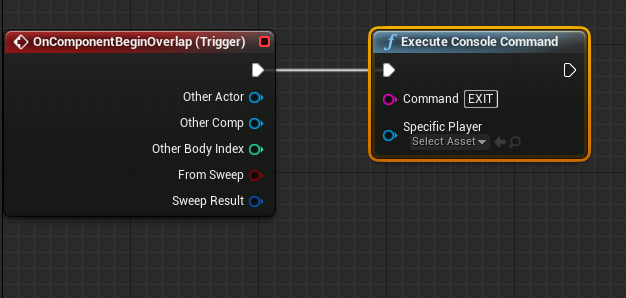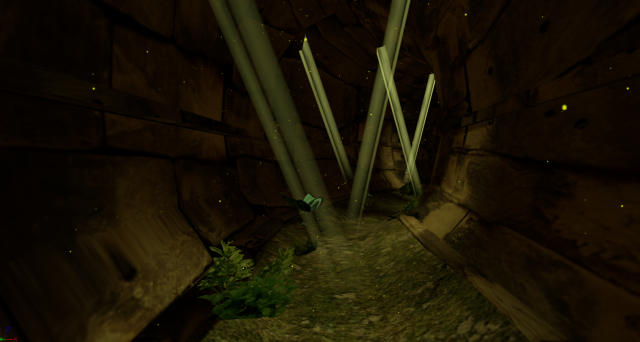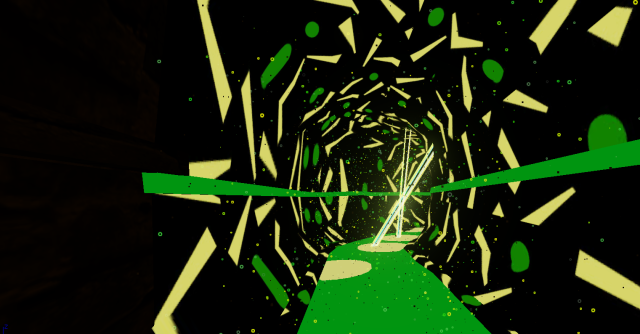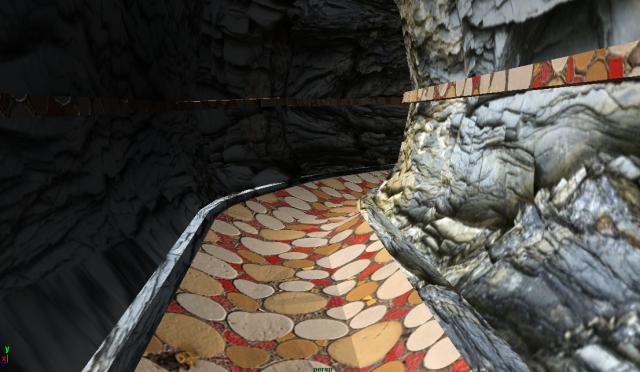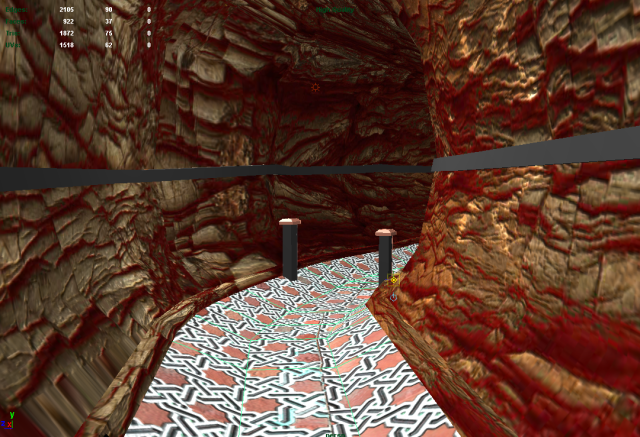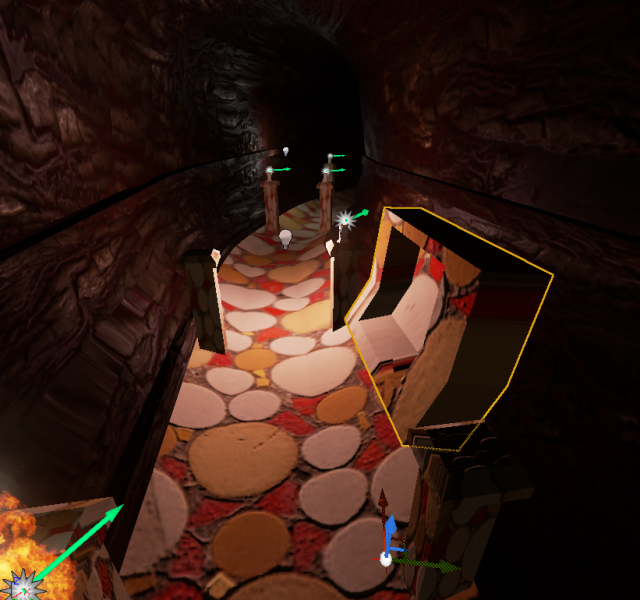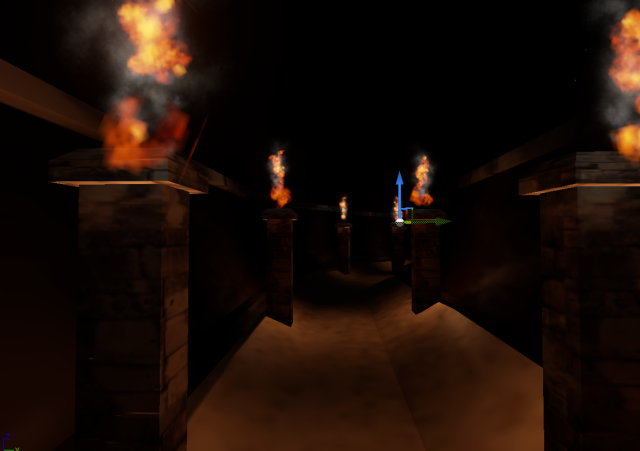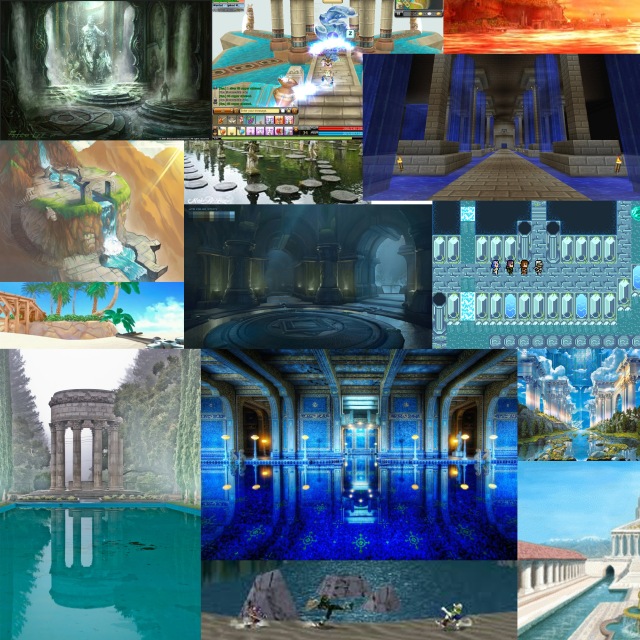I’ve also been working on my ethics form over the last two weeks – this project is more of an ethical minefield than I thought it would be! There are a lot of concerns over mood alteration and the oculus rift health and saftey booklet has a lot of warnings. Hopefully I’ve covered it all enough to not get it sent back.
Project Outline
Project Overview
This project aims to examine how emotion and aesthetics driven game experiences affect their players. This will be done though the creation of a piece of interactive media that explores how the formal elements of art can be applied to game effects to relax a player and guide them towards a meditative state.
Prototype Contents
As a piece of practice-based research, the project will be executed in the form of a game prototype that research participants will play and evaluate. The prototype presented to the participant will be an experiential game, where the participant will be required to wander and explore a changing environment that is symbolic of their mind. The visual art, audio and feel of the game will attempt to induce a relaxed state in the player though use of visual deprivation in areas of darkness, and abstract forms that allow freedom from representation and real life. This presentation method of the prototype is currently undecided – it may be on Oculus Rift, projected or be displayed on a computer screen.
Evaluation and Interviews
Presuming the Oculus Rift is used, potential participants will be asked to fill in a form to make sure they have no medical conditions that make use of the VR headset dangerous before they play. If they are then able to participate, they will be asked about their current mood and state of relaxation with a lincher scale questionnaire. Participants will be asked to play the game to the end, though will have the option of leaving the study at any time. Whist playing, participants will be invited to use think aloud protocol, articulating their thoughts and feelings at that moment in time. The facial expressions, body language and reactions of participants will be noted, and if the subject consents, filmed. A debrief interview will be performed with every participant, noting their thoughts and feelings in particular areas of the game, whether they reached a meditative state, general views on the strengths and weaknesses of the prototype, and most importantly, their current emotional state. They will be asked to fill in a second questionnaire, identical to the first one, to show the difference in their mood. This information will then be used to determine whether the current prototype relaxes players, and how it can be improved.
Ethical Issues
Use of Human Participants
The use of human participants raises a number of ethical concerns. In order to minimise damage to subjects, they will have the research project and anything required of them as a participant explained prior to deciding whether to participate. After deciding, they will be asked to sign a consent form. They will be notified that they can leave the test at any time. Some subjects may feel uncomfortable with being filmed. All participants will be given a choice of whether to be filmed, and asked to sign a consent form if they agree. If a participant feels uncomfortable being filmed, it will be stopped. All data on participants will be sorted securely in university M drives and will be destroyed when the research ends. When discussed on the blog or in the dissertation, all participants will be kept anonymous.
Altering Mood States
The prototype aims to change the player’s mood. Though it aims to create a positive, relaxed, meditative state, this still raises ethical concerns. Every subject will have it made clear to them, before consenting to participate, that their mood may be changed. Meditation activates the right side of the brain, which can be a distressing experience for some, as losing logical left-side thought processes can make those unused to meditation feel as if they are not in control. While this is not very common, it will be important to inform participants of this possibility and let them know that they can leave at any time if they feel distressed.
Use of Oculus Rift
If the prototype is to be tested using the Oculus Rift VR headset, the player’s safety will have to be kept in mind at all times. This headset makes the player unaware of the outside world, so the sensory deprivation could potentially aggravate the potential distress felt when in a meditational state. This headset can cause some players simulation sickness. To minimise this risk I will provide the participants with mint sweets to suck on whist playing – this is often used to minimize motion and travel sickness. Again, the participants will be warned that motion sickness is a possibility before they agree to take part.
A sign will be put up at the exposition warning viewers about motion sickness and distress.
Credit
I will require sound assets for my game, which is something I am unable to produce. I will give appropriate credit explicitly within my exposition set up, with a plaque and in the game, though a credits screen. They will also be acknowledged within the dissertation. Though it is not likely, if photo textures belonging to someone else are used, they will receive the same credit.
Human Participants
Initially, participants who play games and have an interest in emotional depth in games will be chosen. This will help align the project with current works that exemplify the ideals of this project. Once a solid prototype has been produced, a wider demographic of participants will be chosen, including those with a purely consumerist knowledge of games and those who do not play at all. These participants will be between 18 and 30 years old.
Due to health and safety concerns, none of these participants will be pregnant, have binocular vision abnormalities or psychiatric disorders, or suffer from a heart condition or other serious medical condition. This will be asked about before allowing anyone to proceed.
My initial participants will be recruited from the Abertay Game Development society, and game developers/students I know personally.
My wider game-playing demographic will be sourced from within the AMG school. To find interested participants I will ask lecturers to advertise my project to their students.
To find non game players to take part, I will ask my family and their friends, as well as asking my supervisor to put a post on the Abertay Intranet asking for participants from courses outside of the AMG school.
In order to minimise damage to subjects, they will have the research project and anything required of them as a participant explained prior to deciding whether to participate. They will be notified that they can leave the test at any time. All participants will be given a choice of whether to be filmed and if a participant becomes uncomfortable while being filmed, it will be stopped. Every subject will have it made clear to them, before consenting to participate, that their mood may be changed to a relaxed one, but sometimes this can lead to distress. I will reiterate that they can leave at any time.
To minimise the risk of motion sickness while using the VR headset, I will provide the participants with mint sweets to suck on whist playing – this is often used to minimize motion and travel sickness. Again, the participants will be warned that motion sickness is a possibility before they agree to take part, and that the sensory deprivation of the headset could be distressing for them.
A sign will be put up at the exposition warning viewers about motion sickness and distress.
Oculus Rift Health and Saftey
| Main Hazards Identified | Who Will Be Affected | Control Measures to Reduce the Risk |
| Risk to those with existing health disorders or who are pregnant.
Seizures Disorientation and lack of awareness of surroundings – trip hazard, could bump into people, could touch dangerous objects etc. Impaired balance affecting the VR experience and leading to sickness or discomfort. Extreme discomfort or heath issues. Mild motion sickness when using the headset. Radio Frequency Interference: The headset can emit radio waves that can affect the operation of nearby electronics, including cardiac pacemakers. |
Those who are pregnant or have binocular vision abnormalities, psychiatric disorders, or suffer from a heart condition or other serious medical condition.
1 in 4000 people may experience severe dizziness, seizures, epileptic seizures or blackouts triggered by light flashes or patterns, and this may occur while they are watching TV, playing video games or experiencing virtual reality, even if they have never had a seizure or blackout before or have no history of seizures or epilepsy. This is more common in children than in adults. There are also those who have a history of seizures. All participants using the rift. Participants who are tired, need sleep, are under the influence of alcohol or drugs, are hung-over, have digestive problems, are under emotional stress or anxiety, or are suffering from cold, flu, headaches, migraines, or earaches. Participants who experience seizures; loss of awareness; eye strain; eye or muscle twitching; involuntary movements; altered, blurred, or double vision or other visual abnormalities; dizziness; disorientation; impaired balance; impaired hand-eye coordination; excessive sweating; increased salivation; nausea; lightheadedness; discomfort or pain in the head or eyes; drowsiness; or fatigue. Participants who experience light nausea or disorientation while using the headset. Those who have an implanted medicial device, such as a pacemaker. |
Before consenting, the potential participant will be asked if they fit into this group. If yes, they will be not be allowed to participate.
It is hoped that due to the age range and intended number of participants that this will never come up, however the participants will be warned and asked to stop playing and inform me if they feel sick at all. Those with a history of seizures will not be allowed to participate. I will make sure that participants using the rift remain seated at all times. The research will not be conducted near other people, objects, stairs, balconies, windows, furniture, or other items that the participant could bump into or knock down when using the headset. The audio volume will be low enough that participants can hear what is going on around them. Participants will be asked not to stand up straight away after using the headset and will be given time to adjust to their surroundings. Before consenting, the potential participant will be asked if they fit into this group. If yes, they will be informed that they will be more susceptible to motion sickness or discomfort than other players. It is then their choice whether to take part. If they are under the influence of alcohol or drugs they will not be allowed to take part. Participants will be warned and asked to stop playing and inform me if they feel sick at all. As those with serious medical conditions are barred from participating it is hoped this will not be an issue. To minimise this risk I will provide the participants with mint sweets to suck on whist playing – this is often used to minimize motion and travel sickness. Again, the participants will be warned that motion sickness is a possibility before they agree to take part. This will be asked about along with the other medical questions. Those with implanted medical devices that could be affected will not be allowed to take part. |








